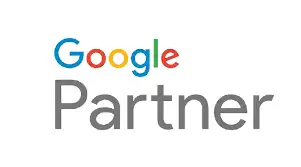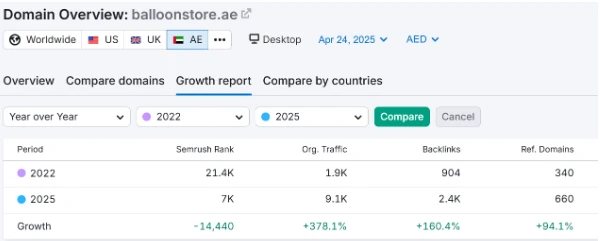Machines Learning: The Rise of Generative AI in Business, Research and Education
- digitalmanqoosh
- March 21, 2023
- Uncategorized
- 0 Comments
Generative AI: ChatGPT & Large Language Models
In design, generative AI can help create countless prototypes in minutes, reducing the time required for the ideation process. In the entertainment industry, it can help produce new music, write scripts, or even create deepfakes. Generative AI has the potential to revolutionize any field where creation and innovation are key. This makes generative AI applications vulnerable to the problem of hallucination – errors in their outputs such as unjustified factual claims or visual bugs in generated images. These tools essentially “guess” what a good response to the prompt would be, and they have a pretty good success rate because of the large amount of training data they have to draw on, but they can and do go wrong. In ad tech, machine learning is used more broadly than full-on AI to make real-time bidding decisions, improve targeting quality, empower recommendation engines, or detect ad fraud.
This helps CPG companies optimize inventory management, reduce stockouts and overstocks, and enhance supply chain efficiency. Creating Large Language Models (LLMs) that can generate natural-sounding outputs like text by leveraging high-volume data sets, grammar, semantics, and context is a clear example of the power of generative AI. By leveraging the power of Generative AI to analyze and interpret data from connected devices and systems, organizations can gain unprecedented genrative ai insights into their operations and customers. This will enable organizations to make informed decisions and take proactive steps to optimize their workflows and offerings. In the past, creative tasks such as design, writing, and music composition were largely the domain of human experts. However, with the emergence of Generative AI, machines are now capable of generating creative outputs that are virtually indistinguishable from those created by humans.
Step 5: Integrate Your Generative AI Model with Your Enterprise Systems
From ChatGPT to Google Bard, we can’t seem to go a week without seeing a new development making the headlines. We are the first formal association of Split’s tech community which includes companies, associations, institutions, meetups, and individuals. They all need to rely on human curation to ensure that knowledge content is accurate with a good governance approach. It also needs to ensure the quality of facts with the help of an evaluation strategy, as generative AI is widely known to “hallucinate” on occasion and confidently state facts that are incorrect or non-existent.
An expansive topic, Artificial Intelligence (AI) is software which can reflect limited human intelligence and perform tasks accordingly, often using vast quantities of data. For example, generating human-like text, or identifying and acting on patterns in images. There does not appear to be a universal definition of Artificial Intelligence, and the term can be used erroneously. This piece delves into the contemporary cybersecurity landscape, identifying and analyzing the top five threats in today’s digital realm. You’ll find valuable insights within if you’re a cybersecurity professional, a business leader, or simply someone intrigued by the digital world and its challenges. Brace yourself deep into the labyrinth of digital threats and potential strategies to fortify your cyber defences.
Overall, Generative AI can be a valuable tool in helping HR and people teams to onboard new employees, providing them with the information and support they need to be successful in their new roles. By automating these time-consuming tasks, people and resourcing professionals can focus on more strategic aspects of their roles, ultimately leading to a more efficient and cost-effective recruitment process. For example, AI-powered recruitment software and chatbots can streamline the hiring process, making it easier for people professionals to focus on more strategic tasks and maintain the human touch in their interactions with employees and job candidates. As generative AI continues to gain traction, HR departments can utilise applications to automate and optimise processes, reduce costs, improve decision-making, and help improve employee engagement.
What is ChatGPT and why does it matter?
Generative AI has revolutionized the field of natural language processing by enabling the generation of coherent and contextually relevant text. It complements NLP technologies by enhancing language generation tasks such as chatbots, virtual assistants, and automated content creation. Generative AI can automate data entry tasks by learning from historical data to generate predictions and suggestions for data input. By analyzing patterns and contextual information, the system can accurately populate fields and reduce the need for manual data entry.
One other reason why GenAI is more substance than hype is that companies across sectors are? This suggests a very broad applicability across industries, and we think, there will hardly be any business in the future which will not be transformed by it. Recently, GlobalData’s filing analytics showed a massive surge in analysts asking GenAI-related questions to the top management of companies to assess their preparedness for this emerging threat/opportunity for their business. Below is the innovation S-curve for GenAI – which identifies the disruptive innovations within AI from millions of patent filings within artificial intelligence using proprietary AI algorithms.
What does generative AI mean for the future?
A prolific businessman and investor, and the founder of several large companies in Israel, the USA and the UAE, Yakov’s corporation comprises over 2,000 employees all over the world. He graduated from the University of Oxford in the UK and Technion in Israel, before moving on to study complex systems science at NECSI in the USA. Yakov has a Masters in Software Development.
Generative AI can be used as a research tool to help gather background information on a topic relating to your policy area that you are unfamiliar with. For example you might be interested in how a country’s greenhouse gas emissions are measured. Generative AI will be able to quickly provide you with an overview of this, to aid your understanding.
This not only exceeds customer expectations but also reinforces the insurer’s commitment to prompt and efficient service. One of the most significant advantages of generative AI for insurance leaders lies in its potential to automate various processes. By harnessing the power of machine learning, insurers can eliminate manual, repetitive tasks, and streamline their operations.
As suggested by the name, generative AI refers to AI systems that can generate content based on user inputs such as text prompts. The content types (also known as modalities) that can be generated include like images, video, text and audio. These applications use foundation models with ‘fine-tuning’ to create applications.
Named as one of the Top 20 Women Changing The Landscape of Data, Inma’s reputation as a digital pioneer has also seen her become a Member of the Expert Group at the Global Partnership on Artificial Intelligence. Furthermore, generative AI can be used to automate insurance claim processes, facilitating faster claims settlements. By utilising algorithms that analyse images or other visual data, insurers can expedite claim processing, minimising the time and effort required from customers.
Explainer: What is a foundation model?
One trainee saw an opportunity to improve functionality in eBay’s checkout feedback process. Using the Alteryx platform, she built a model to determine problems and predict solutions before humans even stepped in. Generative AI can automate underwriting processes by rapidly analysing large volumes of data, identifying patterns, and predicting potential risks. This not only saves time but also ensures accuracy and consistency in risk assessments.
AI ‘red teams’ race to find bias and harms in chatbots like ChatGPT – The Washington Post
AI ‘red teams’ race to find bias and harms in chatbots like ChatGPT.
Posted: Tue, 08 Aug 2023 07:00:00 GMT [source]
A development journey spanning decades has suddenly accelerated to deliver the likes of ChatGPT, Dall-E, and Google Bard into the mainstream. Recognizing the unique capabilities of these different forms of AI allows us to harness their full potential as we continue on this exciting journey. On the other hand, traditional AI continues to excel in task-specific applications. It powers our chatbots, recommendation systems, predictive analytics, and much more. It is the engine behind most of the current AI applications that are optimizing efficiencies across industries. Generate highly effective job descriptions, outreach messages, and other recruitment-related content, with Hally.
- This would most likely destroy its confidential nature and likely put it in the public domain.
- Organizations will foster more productive, creative, and competitive working conditions by adopting and implementing AI technologies like Generative AI and LLM in the workplace.
- This helps governments make more informed, data-driven decisions that address pressing societal challenges.
- From all sides of ad tech – DSPs, SSPs, CMPs, fraud prevention tools – I am seeing swaths of vendors rebranding their products/tech as “something-AI” and pushing machine learning, previously kept in the background, to be front and centre of the product.
“The future legislative framework for AI, and broader tech, will be complex, fast developing and multi-layered. For businesses, adopting a holistic approach that is embedded in their business strategy will be crucial.” Will data entered on the AI system be protected, and will the operation of the system be genrative ai robust? To what degree will your personnel rely on the use of that AI, and are contingencies needed in the event it becomes unavailable (for a temporary period, or permanently)? Ethical, reputational, legal and commercial considerations will need to be addressed holistically when answering these questions.













